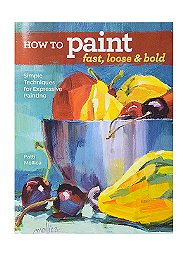Styles & Periods

Pre-Raphaelites
In 1848, seven English artists (of various disciplines) joined to form the Pre-Raphaelite Brotherhood, focused on reviving a level of academic integrity in art, which they felt had been compromised. The Pre-Raphaelites, as they came to be known, felt that Raphael, and the Mannerist painters who followed, had relied too heavily on classical and inaccurate poses, respectively. The Pre-Raphaelites' foremost concern was an exhaustive awareness and study of the natural world, so that their works might contain an extraordinary level of detail and complexity. These artists adopted an approach of naturalism with attention to textures, line, light and color, inspired by Italian and Flemish works from the Early Renaissance. The Pre-Raphaelites' work was often met with criticism, notably John Everett Millais' painting, Christ in the House of His Parents. Due to the raw, naturalist style of the painting, and the unflattering depiction of Mary, the work was labeled by many as blasphemous. The Brotherhood never managed to gain much traction, in part because of internal disagreements regarding the trajectory of the movement, but the exacting style did influence later movements, including the European Symbolists.
- 20th Century Architecture
- 20th Century Photography
- 20th Century Sculpture
- Abstract Expressionism
- Aegean Art
- African Art
- Archaic Asian Art
- Art Nouveau
- Arte Povera
- Ashcan School
- Avant-Garde
- Barbizon School
- Baroque
- Bauhaus
- Body Art
- Buddhist Art
- Byzantine Art
- Carolingian Art
- Celtic Art/ Early Medieval Art
- Chinese Painting
- Color-Field Painting
- Computer Art
- Conceptual Art
- Constructivism
- Contemporary Art in Asia
- Cubism
- Dadaism
- De Stijl
- Die Blaue Vier
- Die Brücke
- Divisionism
- Early Christian Art
- Early Renaissance
- Earthworks
- Egyptian Art
- Environmental Art
- Etruscan Art
- Expressionism
- Fauvism
- Feminist Art
- Funk Art
- Futurism
- Gothic Art
- Graffiti Art
- Greek Art
- Happenings
- Hard-Edge Painting
- Hellenistic Art
- High Renaissance
- Impressionism
- Indian Art
- International Gothic
- Islamic Art
- Kinetic Art
- Korean Ceramics
- Mannerism
- Metaphysical Painting
- Minimalism
- Modernism
- Native American Art
- Near Eastern Art
- Neoclassicism
- Neo-Expressionism
- Neoplasticism
- Northern Renaissance
- Oceanic Art
- Optical Art
- Ottonian Art
- Outsider Art
- Performance Art
- Photo Realism
- Pop Art
- Post-Impressionism
- Postminimalism
- Post-Painterly Abstraction
- Precisionism
- Prehistoric Art
- Pre-Raphaelites
- Process Art
- Public Art
- Purism
- Realism
- Regionalism
- Rococo
- Roman Art
- Romanesque
- Romanticism
- Social Realism
- Spatialism
- Suprematism
- Surrealism
- Symbolism
- Synthetism
- Tonalism
- Video Art
|
|
|
|||
|
|
|
|||
 Download FREE coloring
Download FREE coloring
book pages to color at
home or school.
View Pages »


















